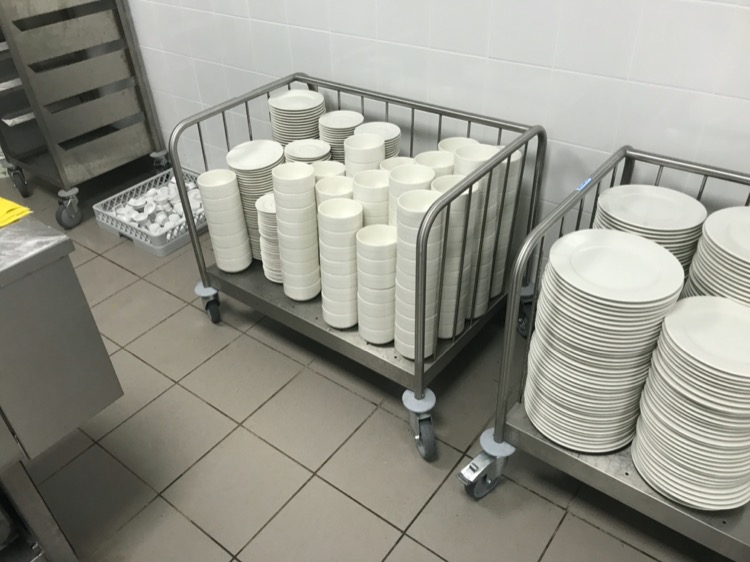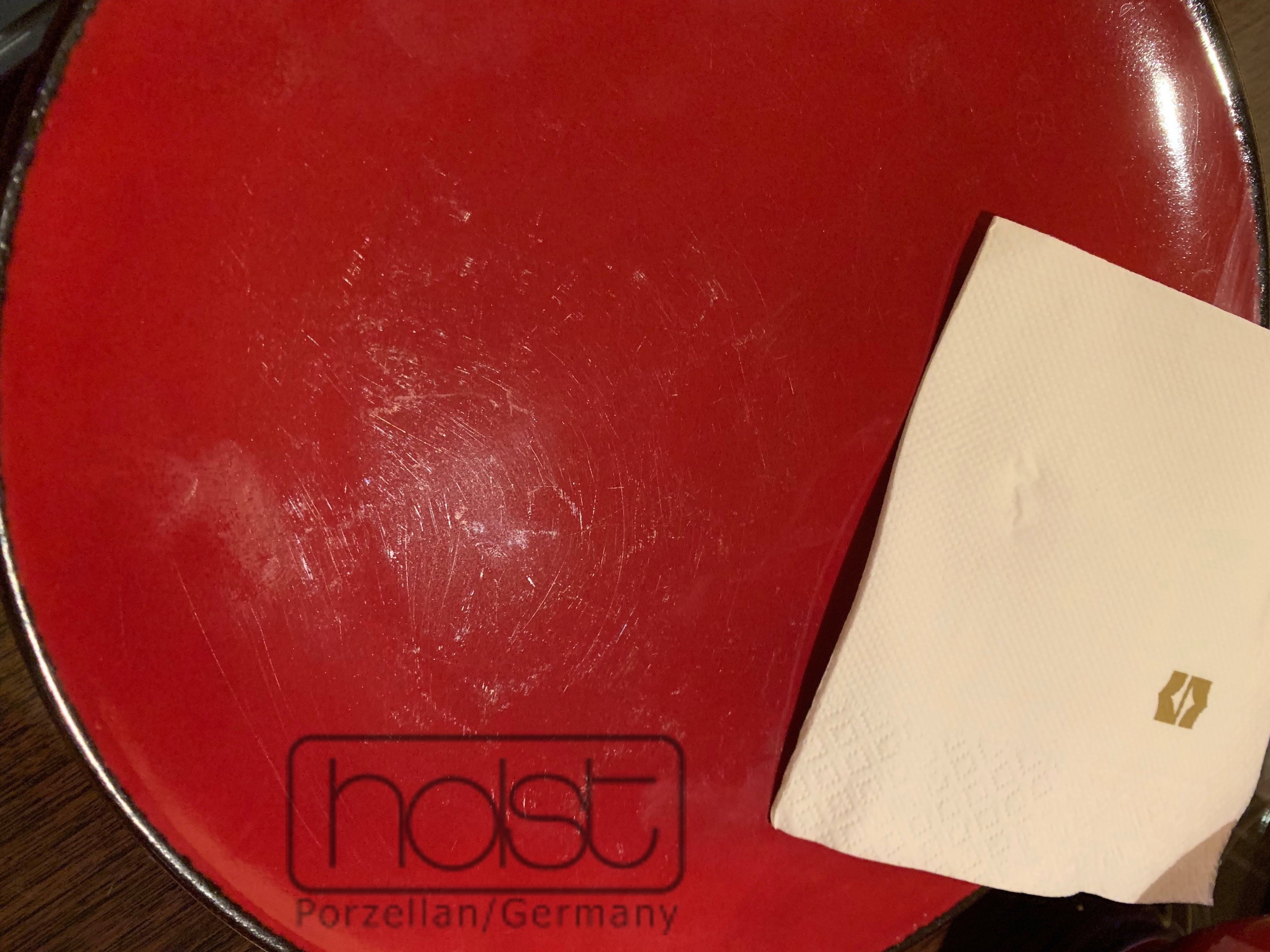Scratches
Cutting marks in ceramic crockery
The group of mechanical damage to porcelain and crockery includes visible scratches in the glaze. Unlike cutlery abrasion, cracks and scratches do not appear on the glaze, but in the glaze as visible and perceptible cracks in the glaze. Such damage is also referred to as glaze breakage due to mechanical load. Such damage occurs most frequently on flat pieces such as plates and platters. Due to their low hardness, low-fired ceramic crockery can suffer such scratches and cutting marks through mechanical pressure from knives - particularly sharp dinner knives and steak knives with chrome steel blades. The following rule of thumb applies: the lower the firing temperature of a ceramic item, the higher the risk of cutting marks on the glaze.
Genuine hard porcelain, on the other hand, should be resistant to such cutting marks when used as intended. The quartz content and the high firing temperature give porcelain a higher hardness than chrome steel or chrome nickel steel 18/0 to 18/10 CNS.
Cutting marks in porcelain due to rinsing residues
Despite being harder than steel and stainless steel cutlery, porcelain is not 100% safe from glaze damage caused by cutting tools. After repeated use of porcelain and inadequate cleaning, washing residues can form on the surface of porcelain. These are mineral solids that are bound by grease or starch residues and are deposited on the glaze surface.
Such particles, which cannot be seen with the naked eye, are hidden in slight streaks, drop marks and water noses that have formed after the drying process. The rule of thumb applies here: The harder the water and the larger such rinsing residues, the higher the load of lime, salt and mineral-containing residues.
Under the mechanical pressure of a cutting knife, these particles then act like crystalline precision cutting tools that literally cut through the mineral quartz-feldspar glaze. Symptomatic of this type of damage is the fact that this type of damage only occurs after repeated use.
Scratches on the porcelain due to incorrect stacking
Scratches caused by improper stacking of porcelain items, usually on plates and platters, are far more common than cutting marks caused by rinsing residues. We know from mineralogy that a diamond can only be cut or scratched with a diamond. The same applies to porcelain. The destructive effect of this type of damage is also intensified by rinsing residues, as explained above. The setting rings of porcelain plates and platters generally have the same Mohs hardness and can easily damage the glazes of the items underneath. Although this can be reduced by expensive polishing, it can never be completely ruled out.

In many places, porcelain is stacked almost carelessly and carelessly. Tall units and domestic kitchens and base units in the catering trade are particularly prone to this mistake. Due to their good stackability, plates and platters are often loaded with 6 to 50 times their own weight. A stack of 20 pizza plates, for example, already weighs 26 to 30 kg. If such weights are then pushed back and forth on a plate or platter, scratches and cracks will easily form in the glaze on porcelain of all brands. Minor alkaline, lime and salt residues in the form of streaks, drip marks and water marks further exacerbate the damage.
Recommendations for use to avoid scratching the glaze
- Change the water in the tank of your commercial dishwasher regularly.
- Do not wash black crockery (pots and pans) with white crockery.
- Remove heavy food residues by rinsing with hot water beforehand.
- After rinsing, wipe the floors briefly with a dry cloth.
- Remove any damp residue from the surface with a dishcloth.
- Avoid stacking plates and platters high.
- Use professional plate stackers and transport trolleys.
- Heated glazes, e.g. directly after rinsing, are softer and therefore more sensitive.
- Never push plates and platters sideways onto a stack.
- Always load and unload plate and platter stacks individually and from above.

